Existing User Log In
New User Registration
Register for a free account to gain full access to the VGChartz Network and join our thriving community.





America - Front


America - Back

It's been five years since Tales of Berseria, and while some may have wondered whether the series was weakening, Tales of Arise proves the exact opposite. Bandai Namco understood that in order to keep up with the rest of the industry and secure growth for the franchise, it needed to make Tales of stronger by investing in better graphics and animations. You can't make history by playing it safe, and Tales of Arise is a perfect illustration of that.
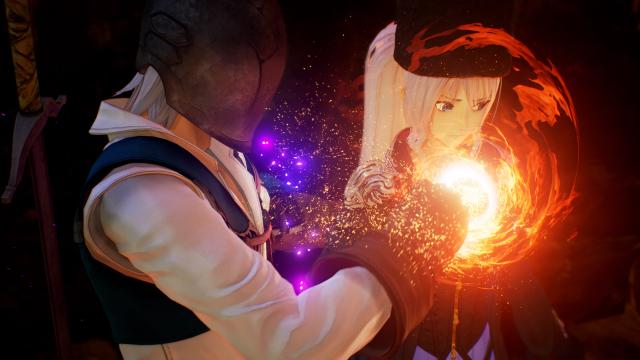
As always with this franchise, Tales of Arise is a heavily story-focused Japanese RPG, but what struck me is how particularly dense the story is. I'm used to JRPGs starting quite calmly, but that's certainly not the case in Tales of Arise. The narrative immediately adopts a dramatic tone; the protagonist you play as (Iron Mask - a strange fellow whose face is always covered by a bizarre mask), endures a hopeless life as a slave like everyone around him. His planet, Dhana, has been under the brutal rule of a technologically superior tribe, the Renans. As he runs into the local resistance, he decides to stand up to the Renan despots. With the help of a renegade Renan called Shionne, he acquires the Blazing Sword, an excessively powerful artifact likely to turn the tide in favor of the resistance.
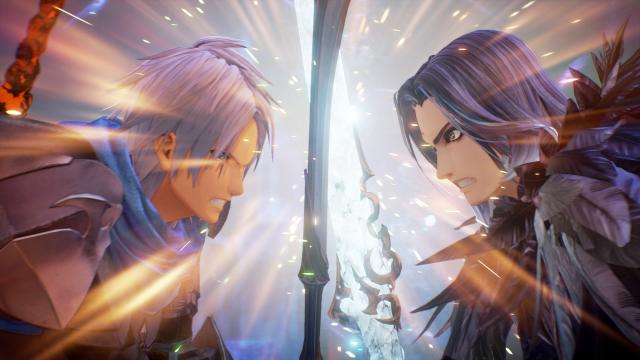
Tales of Arise is the perfect model of an epic RPG. Dhana, under Renan rule, is a fairly dark world, plagued by denunciation, deception, intolerance, and summary executions. Against this, Iron Mask (who is later known as Alphen) represents the values of freedom and forgiveness. Whether it's sad, heroic, surprising, or slightly terrifying, almost every cut scene is moving and memorable.
Visually, Tales of Arise makes dramatic improvements compared to Tales of Berseria, and this reinforces the quality of the storytelling. In terms of progression Namco Bandai also gets things rights; Alphen's party visit Dhana's realms one after the other, and each one offers up a clever yet different way to shape the narrative. Each chapter ends in a fantastic climax, including an absolutely Dantesque confrontation with the Renan lord, and a magnificent epilogue.
In a sense Tales of Arise is also a valuable game, as it renews the tradition of having a strong philosophical message. It's not just Dhana versus Rena (or Good versus Evil); the story tries to sort out the good and the bad within each faction, and adopt a really humane view of everything that happens.
The narrative takes a fascinating Star Ocean-esque turn towards the end, offering up quite a few surprises. And yet the final sequence itself left me disappointed. I thought it was slightly too cliché, whereas the story up to that point had showcased some original ideas. Additionally, being stuck playing Alphen in the duel at the very end is annoying. As I pointed out in my review of Sword Art Online Alicization Lycoris, players don't necessarily main the lead character. A JRPG is played with a team (especially when teamplay is as important as it is in Tales of Arise), so it should remain as such to the very end. The epilogue is unfortunately surprisingly short, which weighed down my final impressions. It's not a deal breaker, but I do think it could have been longer and/or better. More checkpoints in the final dungeon wouldn't have hurt either...
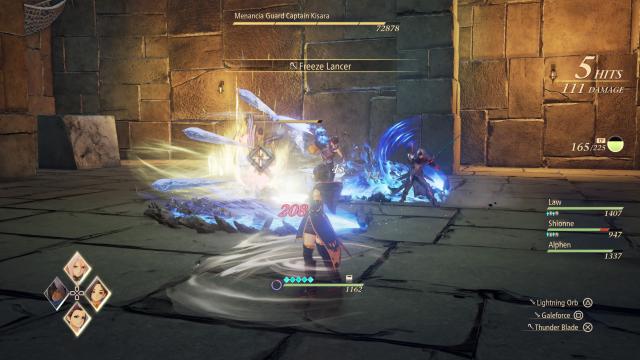
While going through the narrative is a great ride in itself, Tales of Arise has many other great qualities. The first of these is the battle system. The game retains the series' action-PRG approach, but adds a couple of features that reshape the combat. For example, it's possible to battle both at close and long range, even with characters that aren't supposed to. Rinwell is the most obvious case, but this applies to Shionne and Dohalim as well. In previous Tales of games, playing mages like Rinwell was about spamming magic from afar, which isn't the most intense type of gameplay. So I expected Rinwell to be like that, and yet she learns quite a few moves that allow her to attack directly alongside front characters. For example, she can thrust a sphere of compressed wind just in front of her, a bit like Naruto's Ransengan.
Characters don't just have ground moves either, they also have abilities that can be performed in mid-air. That means Rinwell can chain lengthy combos by linking air moves and ground moves. Of course, she does have dark magic, but once more there's a twist to it; she can charge one spell into her book, which leads to higher-tier magic for the next spell. With a bit of time and dexterity, you can unleash a giant spell that hits the entire combat area using just the first base spell. I've focused a lot on Rinwell, but other characters are just as interesting to play. Shionne can throw bombs on the field, and Dohalim can extend the reach of his staff, to give just two other examples. There's a remarkable amount of variety to be found within just the basic framework of the battle system.
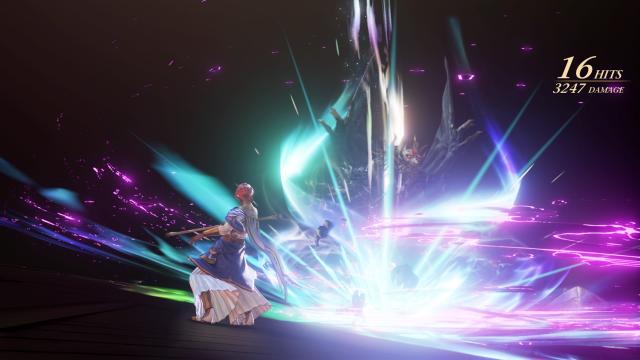
But there's a lot more to it than that. Every character has a "perk" that is actually his/her way of jamming enemy forces. Rinwell can interrupt opponents' magic, Shionne can down flying enemies, Law can break shields, and so on. It's a fairly well-thought-out strategic option and it's linked to another impressive feature that returns from the past, now called Boost Strikes. Perks fill what is called a "boost" gauge, which when full will prompt a special move where two party members cooperate in a fierce attack. I was a big fan of dual attacks in the Xillia sub-series and was thrilled to see them come back for Tales of Arise. Tales of Arise substantially progresses these moves visually, so they feel even better here than in Tales of Xillia. The Ultimate moves of each party member, called "Mystic Artes", are no less visually impressive; the animations are stunning, so the developers clearly gave them a lot of attention. I'd like to stress too that dodging plays a very important role in this title. It's directly linked to the aforementioned possibility of fighting head-on with every character and has merits like counterattacking and building the Mystic Artes gauge. It also makes the action even more dynamic.
The final novelty, which I'm much less keen on, is the CP system. CPs are points you consume when you use a healing spell. You start with 400, but after a few fights it might get to 300 and continues decreasing until you can't heal any of your characters any more. It is, in my honest opinion, a bad idea. Although there are (very limited) items that recover CP, the whole system acts like a timer at the end of which you cannot battle effectively. So it quickly begins to feel like a giant penalty, which is incredibly frustrating. There were cases where I had to exit a dungeon before reaching a checkpoint, solely because of the CP system, and then had to go through it all over again. The cost of healing is prohibitive until the later stages of the adventure (48CP for one revive!), so it's poorly balanced. On top of that, Shionne and Dohalim are the main healers, but they share the same CP pool. If they were using traditional MP, they could support the party for much longer. That said, the CP system didn't alter my overall enjoyment of the game or its battle system, which on the whole is tremendously effective and enjoyable - I couldn't get enough of it.
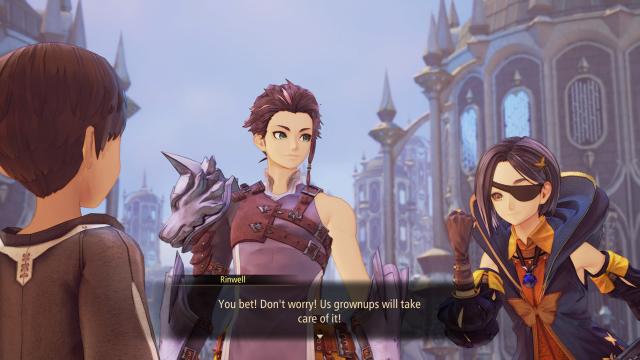
A good JRPG isn't just about the main narrative or battle system, and fortunately Bandai Namco ensured this much awaited comeback has a lot more in store for fans beyond those features. Tales of Arise boasts a good deal of side content and side quests. While it's often about hunting some monsters or delivering materials, side quests do come with little stories and quite a bit of character interaction. This is where Tales of Arise adopts a more humorous tone, with the side content showing off the more light-hearted aspects of Alphen and his pals' personalities (Shionne is revealed as a lover of cuisine, while Kisara is notoriously stingy), as well as plenty of hilarious characters interaction.
There are also some long-running side quests, such as one with an old foodie who asks you to come up with ingredients and try various recipes, which results in Alphen and Shionne goofing around. You can later use these recipes when camping outside, and they grant useful benefits like increased attack, defense, HP heal, etc. This is just one example of a great JRPG side quest. The one involving a search for owls is fun too, with the birds being hidden across Dhana, including in some unlikely places. Once found, they return to the owl village, where the King of owls will reward you with new costumes. The fishing mini-game is worthwhile too, although I was disappointed to find out that you can only fish with Kisara (Trails of Cold Steel has allowed you to choose between several different characters for fishing since 2017 by way of contrast). The main story lasts about 50 hours, but with all the side content there's around 70 hours' worth of content in total, which falls in line with previous entries in the series.
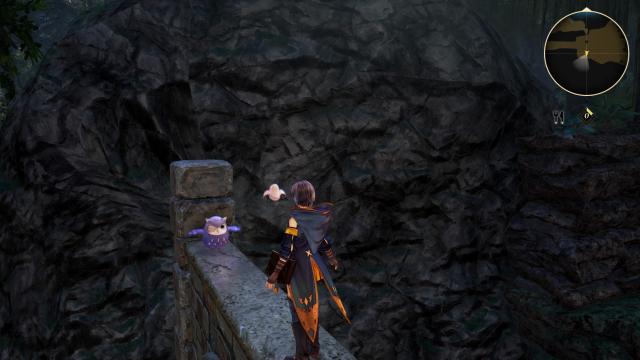
Visually, Tales of Arise is fabulous, even outside of battles and cut scenes. The landscapes are gorgeous. Each Dhanan realm is a new discovery in terms of design; the scale and grandeur of the world is breathtaking too. And if you look closely, there are little details like the light being sucked up from streetlights in Cyslodia. The level design on the other hand feels very old-fashioned. Most of the game consists of very narrow paths and the impression of travelling in a straight line is predominant. Tales of Arise ends up being very linear, so there's been no revolution in that respect.
Supporting the visuals is a tremendously enjoyable soundtrack. The sense of grandeur in terms of world design is emphasised by various different symphonies. The Japanese voice acting is flawless too.
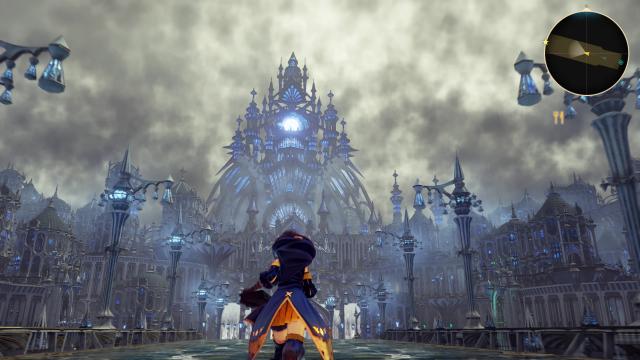
Tales of Arise is a near perfect comeback for the series. It's clear proof that taking your time and investing in superior technology can eventually lead to a greater game experience. Throughout, you can feel Bandai Namco's resolve to provide a state-of-art JRPG, one that's thoroughly enjoyable in almost every respect, from story, to visuals, combat, and side content. This revival of the Tales of series is outstanding, even more so in an industry where many Japanese video game makers prefer to play it safe, lowering their ambitions in order to protect their earnings. By innovating and investing in Tales of Arise, as well as Scarlet Nexus earlier this year, Bandai Namco is leading the way to the next generation of JRPGs.
After graduating from a French business school, Thomas felt an irresistible force drawing him to study Japanese, which eventually led him to Japanese Profeciency Test level 1 in 2012. During the day, Thomas is a normal account manager. But at night he becomes Ryuzaki57, an extreme otaku gamer hungry for Japanese games (preferably with pretty girls in the main role). His knowledge now allows him to import games at Japanese release for unthinkable prices, and then tell everyone about them. Feel free to contact on twitter at @Ryuz4ki57









